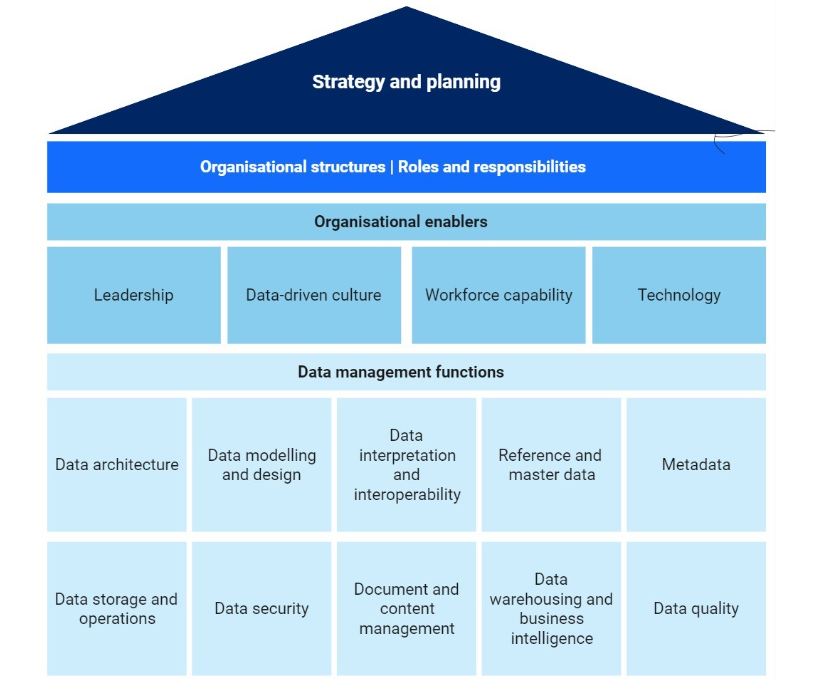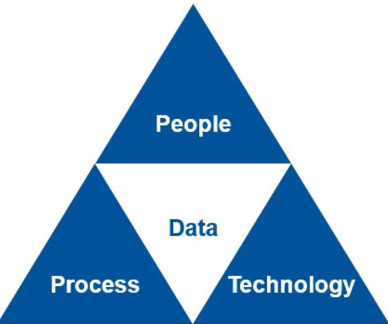Module 3: Data Governance Model
Outlined below is a practical model that has been designed to assist NSW Government agencies to develop or strengthen data governance maturity in their organisation. The Data Governance Model (‘the Model’) brings together all the components that are vital for any data governance program, regardless of the agency.
What does the Model cover?
The Model defines four interconnected tiers of data governance activities, each of which is critical to effective data governance in agencies. The four tiers are:
- Strategy and planning – agencies clearly define the data governance program’s values, vision and mission and compose a business-aligned strategy for governing and managing data as an organisational asset.
- Organisational Structures & Roles & Responsibilities – agencies ensure accountability and decision-making authority for data-related activities are appropriately assigned and formalised at all levels of the organisation.
- Organisational Enablers – agencies ensure the organisational environment is an enabler of good data governance. This means ensuring there is a strong motivation (or ‘will’) to achieve good data governance by having sustained buy-in and investment from senior leadership, as well as fostering a strong organisational data culture. It also means ensuring the organisation has the requisite capability (or ‘skill’) to achieve good data governance, both in terms of workforce capabilities, as well as appropriate tools and technologies.
- Data Management Functions – agencies ensure their data governance program has oversight of core data management functions (e.g. data quality, storage, security, business insights etc.).

Interpreting the Model
Each component of the Model, outlined in detail in the following modules, includes a high- level summary of what the component is, why it is important, what good practice looks like (i.e. the goals), how to achieve good practice and, where appropriate, provides references to useful resources and relevant standards. The level of detail for each component has been kept to a high level and we intend to expand the practical elements of the framework gradually with input from agencies.
The Model also aligns with Gartner’s (2017) ‘Golden Triangle’ of ‘People, Process and Technology’ (with Data at the centre), which recognises that effective data governance is an ongoing effort executed by people, enabled by repeatable processes, and supported by technology. Each component of the Model therefore encompasses a mix of accountabilities relating to people, processes and technologies to support the implementation of that component.

